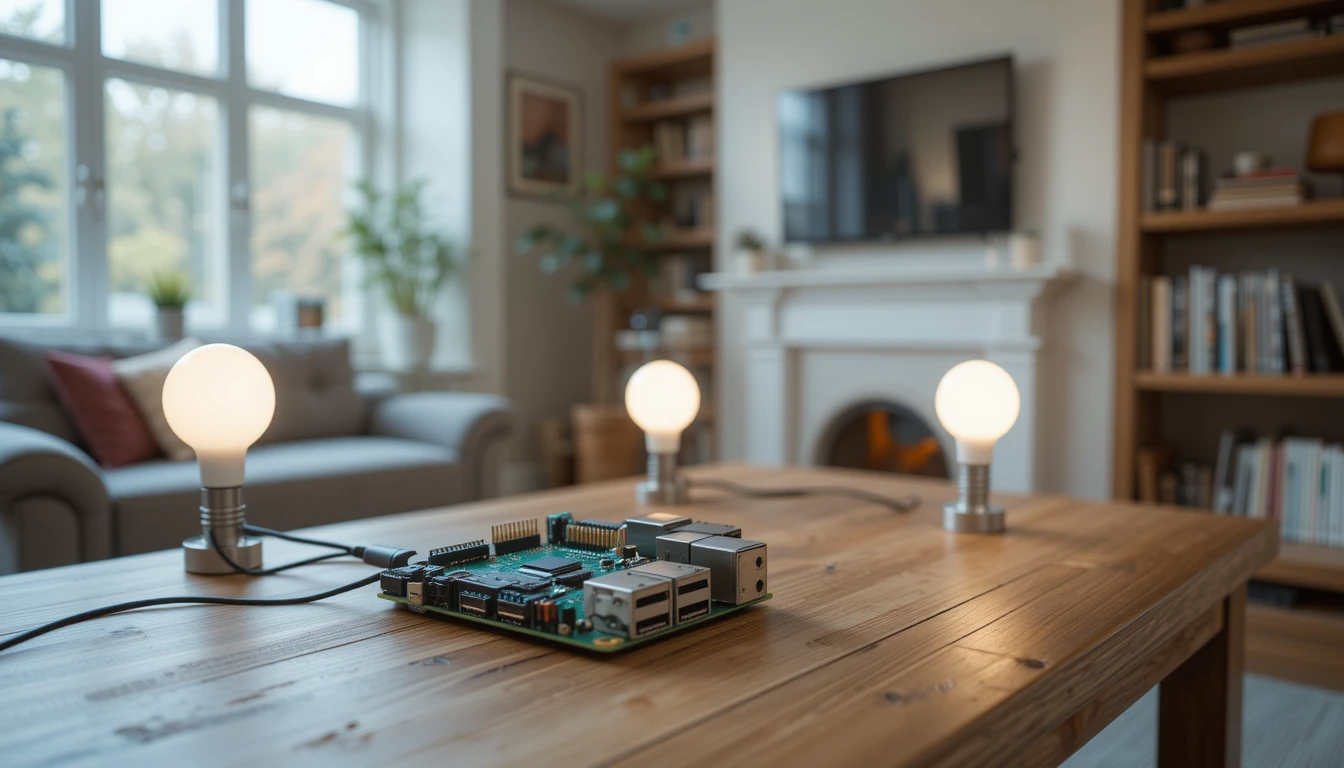How to Create a Smart Home System with Raspberry Pi
Smart homes are no longer futuristic luxuries—they’re practical, affordable, and increasingly common across the UK. With a Raspberry Pi, you can build your own custom smart home system without paying hundreds of pounds for proprietary hubs. But how exactly do you set it up, and what does it cost? Let’s explore.
How Much Does It Cost in the UK?
A DIY Raspberry Pi smart home setup in the UK typically costs between £120 and £300, depending on the devices you connect (smart bulbs, thermostat, CCTV, sensors). Here’s a breakdown:
| Item | Approx. Price (UK) |
|---|---|
| Raspberry Pi 4 (4GB/8GB) | £60–£90 |
| MicroSD card + Power Supply | £15–£25 |
| Case with cooling fan | £10–£20 |
| Smart bulbs (Philips Hue, IKEA Tradfri) | £12–£50 each |
| Smart thermostat (Hive, Tado) | £150–£250 |
| Smart plugs | £15–£25 |
Step-by-Step Guide to Building Your Raspberry Pi Smart Home
Step 1: Gather Your Hardware
- Raspberry Pi 4 (recommended for stability)
- MicroSD card (32GB minimum)
- Stable Wi-Fi router
- Smart devices (bulbs, thermostat, plugs, CCTV)
Step 2: Install Home Assistant
Home Assistant is the most popular open-source smart home platform in the UK. It allows you to control devices from Philips Hue, Hive, Tado, and more—all in one dashboard.
- Download Raspberry Pi Imager on your computer.
- Select Home Assistant OS and flash it to your SD card.
- Insert into your Pi and boot up.
- Connect via browser at
http://homeassistant.local:8123.
Step 3: Connect Smart Devices
Popular UK-compatible devices include:
- Philips Hue bulbs – colourful smart lighting.
- Hive thermostat – British Gas’ official smart heating system.
- Tado thermostat – works with most UK boilers.
- IKEA Tradfri bulbs – budget-friendly smart lights.
- Ring cameras – popular for security.
Step 4: Automate Your Home
Home Assistant lets you create automations such as:
- Turn on lights at sunset (based on UK daylight hours).
- Switch on the heating when temperature drops below 18°C.
- Motion-activated hallway lights at night.
Key Features at a Glance
- Works with Alexa, Google Assistant, and Siri (HomeKit).
- Full local control—no reliance on cloud services.
- Compatible with hundreds of UK smart devices.
- Scalable: add sensors, cameras, and appliances anytime.
- More private and secure than many commercial hubs.
Comparison: Raspberry Pi Smart Home vs. Commercial Hubs
| Feature | Raspberry Pi (Home Assistant) | Commercial Hub (Amazon Echo, SmartThings) |
|---|---|---|
| Cost | £120–£300 | £150–£400 |
| Privacy | Full local control | Cloud-dependent |
| Device Support | Thousands (open source) | Limited to ecosystem |
| Customisation | Unlimited | Restricted |
Pros and Cons
Pros
- Cheaper long-term than proprietary hubs.
- Supports most UK smart devices.
- Private and secure (local hosting).
- Customisable automation.
Cons
- Setup requires basic technical skills.
- Initial configuration takes time.
- Not as “plug-and-play” as Alexa/Google Nest.
Who Should Build This?
If you’re in the UK and want a budget-friendly, private, and expandable smart home system, Raspberry Pi with Home Assistant is perfect. However, if you prefer convenience over tinkering, you may want a plug-and-play system like Hive or Google Nest.
Alternatives in the UK Under £200
- Amazon Echo Hub – £169.99
- Samsung SmartThings Hub – £199
- Hive Hub (British Gas) – £179
- Google Nest Hub – £89–£129
FAQs
How much does a Raspberry Pi smart home cost in the UK?
Typically between £120 and £300 depending on devices.
Can I use Hive or Tado with Raspberry Pi?
Yes, both Hive and Tado thermostats work with Home Assistant on Raspberry Pi.
Do I need coding skills?
No, Home Assistant provides a web-based dashboard. Coding is optional.
Which smart bulbs are cheapest in the UK?
IKEA Tradfri bulbs start at around £12, making them budget-friendly.
Is Raspberry Pi smart home better than Alexa?
It depends—Raspberry Pi is more private and customisable, but Alexa is easier for beginners.
Conclusion
Building a smart home system with Raspberry Pi in the UK is not only cost-effective but also highly customisable and secure. Whether you’re looking to control heating, lighting, or security, this DIY approach gives you more power than commercial hubs at a fraction of the cost.
According to Home Assistant’s official documentation, more UK devices are being supported every year—making 2025 the perfect time to build your system.

